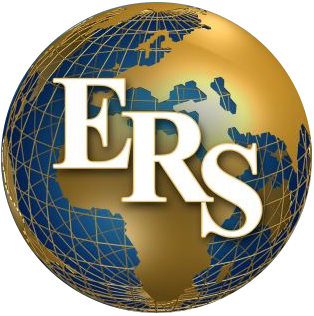Employee Retirement Services, L.L.C. Let's Plan Your Retirement Together — Call today (956) 440-8774
457(b) FAQs
- What is a Section 457(b) deferred compensation plan?
- Can the employer make contributions to the 457(b) plan?
- What types of organizations may establish a Section 457(b) deferred compensation plan?
- Why should my organization consider a 457(b) plan?
- How do I establish a 457(b) plan for my organization?
- Can employees contribute to more than one plan?
- What kinds of investments are allowed in a Section 457(b) plan?
- Who is allowed to participate in the plan?
- Who owns the assets in the 457(b) plan?
- Are 457(b) assets protected from my general creditors?
- Are loans available to employees?
- How much can be contributed to the 457(b) plan?
What is a Section 457(b) deferred compensation plan?
A Section 457(b) plan is a deferred compensation plan offered by state or local governmental employers and other tax-exempt employers. A 457(b) plan allows employees to make contributions on a pre-tax basis through salary reduction.
Can the employer make contributions to the 457(b) plan?
While employers can make contributions, all contributions to the plan are treated as salary reduction contributions, and FICA and other payroll taxes would apply. Generally, employers will choose to make employer contributions to other retirement plan types where such taxes do not apply.
What types of organizations may establish a Section 457(b) deferred compensation plan?
- Any state or local government
- Public school districts and other subdivisions of a state or local government, such as public libraries, police and fire districts, recreational authority, municipal courts or county jails
- Any nonprofit organization under IRC 501(c), such as hospitals, charitable organizations, credit unions, chambers of commerce, labor, and horticultural or agricultural groups
Note: Churches and qualified church controlled organizations are not governed under the rules of 457 plans.
Why should my organization consider a 457(b) plan?
You and your employees will be able to better meet goals for the accumulation of pre-tax savings with the addition of a 457(b) plan. For certain employees who already make maximum contributions to a 403(b) or 401(k) plan, additional pre-tax contributions can be directed to a 457(b) plan. This can be especially important in the final years of service when employees may be receiving extra compensation. Distributions from the 457(b) plan are not subject to the IRS 10% penalty tax on an early withdrawal – a benefit that does not apply in a 403(b), 401(k) or other qualified retirement plans.
If you are a non-governmental, tax-exempt nonprofit, you might be interested in sponsoring a 457(b) plan to benefit key employees since it may be prohibited in your regular retirement plan, due to nondiscrimination rules in those retirement plans.
In a governmental plan, rank and file employees are permitted to participate; however, plans sponsored by 501(c) tax-exempt employers must limit eligibility only to a select group of key employees to avoid being covered under ERISA. This opens the door to providing a benefit for those key employees that is not available (without violation of nondiscrimination rules) in regular retirement plans.
How do I establish a 457(b) plan for my organization?
You must adopt a plan document, appoint a Plan Administrator, select the investment options you will include in your plan, establish plan administration procedures (or delegate plan administration to the vendor providing investments) and arrange for enrollment of your employees. Depending on state statutes in your specific state, you may be required to provide education to your employees (which is a responsibility that also can be assumed by your selected vendor). It is highly recommended that the investment options you select provide diverse choices to your employees regardless of whether or not the statutes in your state specifically require investment diversity in your plan. Before establishing your own 457(b) plan, you should be aware of any state statute that might prohibit the establishment of a plan of your own. While rare, there may be a statute that limits your choice to only the state-sponsored 457(b) plan.
Can employees contribute to more than one plan?
Yes. Contributions to the 457(b) plan do not affect contributions to any other type of plan. For example, if you sponsor a 401(k) retirement plan or a 403(b) plan, you and your employees can contribute the maximum amounts to both plans.
What kinds of investments are allowed in a Section 457(b) plan?
It depends on the options that you choose for your plan, keeping in mind that the options should provide diversity for your employees. That might include fixed annuities, variable annuities, mutual funds, savings accounts, CDs or money market accounts. PlanMember also offers programs that provide professional investment management and model portfolios.
Who is allowed to participate in the plan?
In a public school plan, any employee who performs services for the employer (even an independent contractor) may participate. Because there are no nondiscrimination rules, employers can also limit participation to select groups of employees.
Employers that are nonprofit organizations under IRC 501(c) must establish the plan only for a select group of management or highly compensated staff – the “top hat” group. The limitation to a “top hat” group is necessary to receive ERISA exemption, which is vital to a 457(b) plan under a non-governmental nonprofit. This also permits employers to reward only key employees without concern about violating the nondiscrimination rules that do apply to their 403(b), 401(k) or other qualified plans.
Who owns the assets in the 457(b) plan?
The governmental plan sponsor will own the asset for the benefit of each employee until the employee leaves your employment and elects to take distributions (or rollover or transfer that asset). The 501(c) employer is required to own the asset until the employee leaves employment, at which time an election must be selected for the manner of distributions. Those assets may NOT be rolled over. Each employee names his or her own beneficiaries who will receive the asset upon the employee’s death.
Are 457(b) assets protected from my general creditors?
This differs based on the type of employer. If you are a public school, your plan is a governmental plan, and the assets are required to be “set aside” in a trust, an annuity contract or a custodial account. General creditors of the employer have no access to them. In selecting the investment options, you will want to be sure that the vendor(s) meet the requirements of the “set aside” rule.
For Non-governmental 501(c) nonprofits, the assets are subject to the employer’s general creditors, and the employer is listed as the owner of each account (with the employee listed as the annuitant).
Are loans available to employees?
Section 457(b) plan loans are available in governmental plans only, and only if you choose to include that feature in your plan. Many employers do not permit loans because the failure to monitor loan limits and loan defaults can create problems for the entire plan. However, if your vendor agrees to administer loans for you, you might consider including that feature in your plan.
How much can be contributed to the 457(b) plan?
Employees can contribute 100% of includible compensation up to the salary reduction contribution limit for that year. In 2014, that limit is $17,500. Employees who are age 50 or older can contribute an additional catch-up of $5,500 in 2014. Additionally, if you permit it in your plan, employees may be eligible to use a catch-up for three years prior to normal retirement age. Note that both catch up options cannot be used in the same tax year.
For more information about retirement plans, please call us.
Request a complimentary Plan & Service Analysis
Irma Rodriguez
Harlingen & Elsa
(936) 414-5580 or (956) 410-2510
irodriguez@employeeretirement.org
722 Morgan Blvd Suite G,
Harlingen, TX 78550
—
610 N. Broadway Suite B
Unit 9, Elsa, TX 78543
-
M-F 9:00am - 5:00pm
By Appointment Only
Rosie Zamora
Harlingen
(956) 226-2312
rzamora@employeeretirement.org
722 Morgan Blvd Suite G,
Harlingen, TX 78550
-
M-F 9:00am - 5:00pm
By Appointment Only
Cindy De La Cruz
Rio Grande City
(956) 573-1512
cdelacruz@employeeretirement.org
105 W 5th St,
Rio Grande City, TX 78582
-
M-F 9:00am - 5:00pm
By Appointment Only
Xenia Yvette Alaniz
Houston Area
(956) 780-0419
yalaniz@employeeretirement.org
Conroe, TX 77303
-
M-F 9:00am - 5:00pm
By Appointment Only

“Let's Plan Your Retirement Together”
All Rights Reserved | Employee Retirement Services, LLC.
